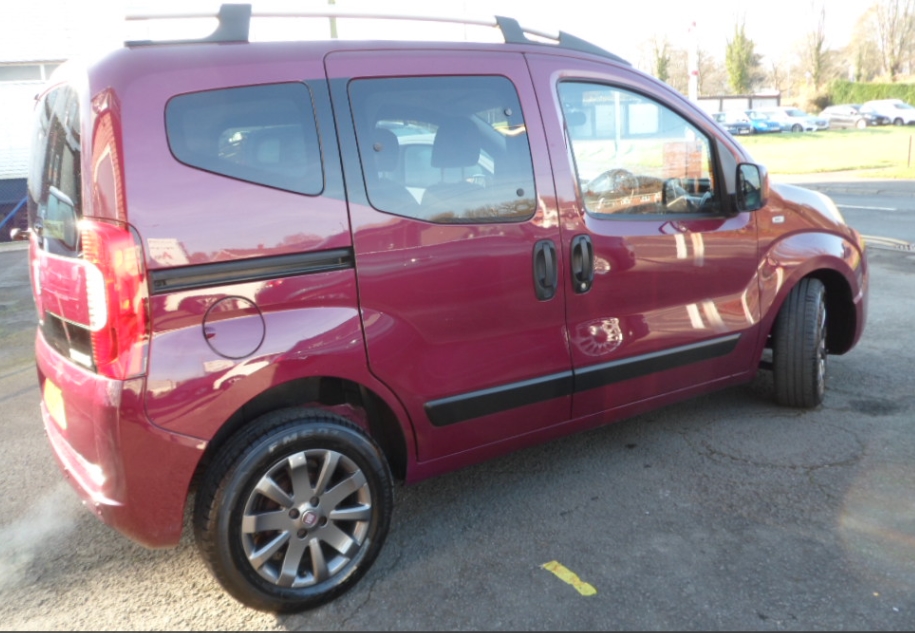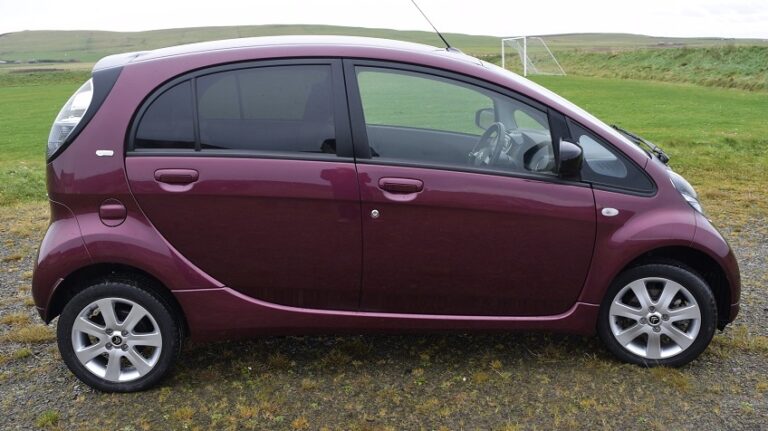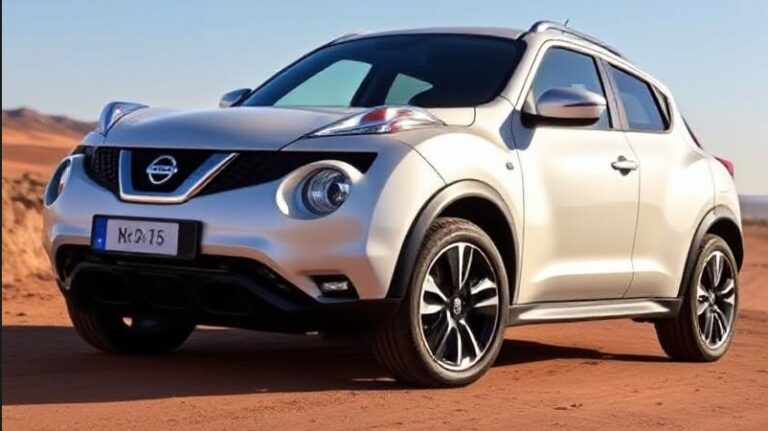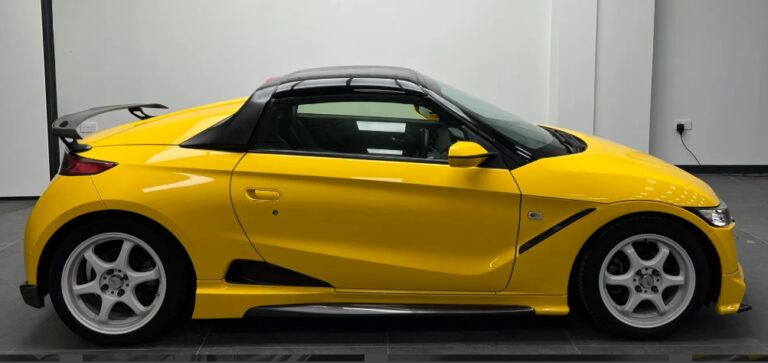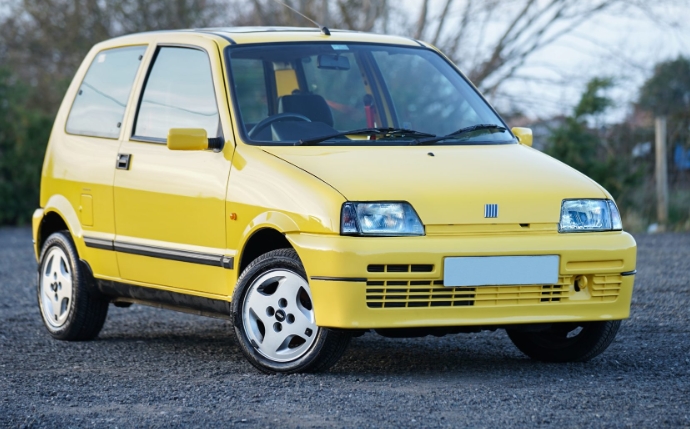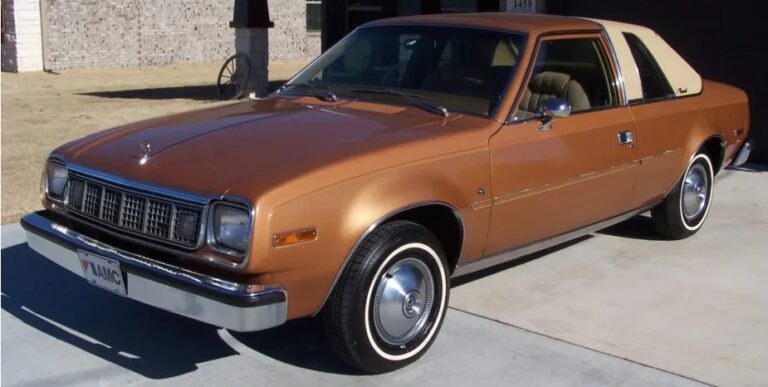The Little Box That Could: Tracing the Evolution of the Fiat Qubo
In the often-crowded landscape of automotive design, where sleek lines and aggressive stances dominate, there exists a niche for practicality and unapologetic utility. The Fiat Qubo, a compact multi-purpose vehicle (MPV) or leisure activity vehicle (LAV), carved out its own distinct space within this niche. Born from a collaboration and sharing its DNA with other European manufacturers, the Qubo never aimed for supercar status. Instead, it promised an intelligent, adaptable, and surprisingly capacious solution for urban dwellers, small families, and those with active lifestyles. This article delves into the fascinating evolution of the Fiat Qubo, charting its lifespan from its inception through various iterations and trim levels, a testament to its enduring appeal as a functional and often overlooked gem.
The Genesis: A Shared Platform and a European Vision (2007-2008)
The story of the Fiat Qubo doesn’t begin in a vacuum. It emerged from a significant collaboration between Fiat and the PSA Peugeot Citroën group (now Stellantis). This partnership, aimed at reducing development costs for small, versatile vehicles, resulted in three distinct but mechanically identical models: the Fiat Qubo, the Peugeot Bipper Tepee, and the Citroën Nemo Combi. Launched in 2007 for the 2008 model year, the Qubo was specifically designed to cater to European sensibilities for compact, yet spacious, personal vehicles.
The core concept was simple: a boxy, upright body on a small car platform, maximizing interior volume while maintaining a manageable footprint for navigating narrow European streets and parking in tight spaces. This approach, while perhaps not conventionally beautiful, prioritized function over form. Its high roofline, sliding rear doors, and a flexible interior layout were its immediate selling points.
.
THIS is GOOD stuff if your car is in need:

.
The Initial Offering: Practicality as Standard (2008 Onwards)
When the Fiat Qubo first hit the market, its primary appeal lay in its inherent practicality. The initial models were characterized by a straightforward yet well-equipped interior. Key features focused on utility and comfort for everyday use.
- Engine Options: Early Qubos were typically offered with a choice of efficient petrol and diesel engines. The most common petrol engine was likely a 1.4-litre unit, providing adequate performance for urban driving. The diesel offerings, a staple in the European market, included the popular 1.3-litre MultiJet turbodiesel, known for its excellent fuel economy and respectable torque, making it ideal for longer journeys and carrying loads.
- Transmission: A 5-speed manual gearbox was the standard offering across the range, reinforcing the Qubo’s no-nonsense, utilitarian ethos.
- Interior Layout: The emphasis was on space and versatility. The rear seats were typically split-folding, allowing for a flexible cargo area. The high seating position offered good visibility, a significant advantage in busy urban environments.
- Trim Levels: While specific trim names might have varied slightly by market, the core philosophy was to offer a few distinct levels of equipment. Common naming conventions often included:
- Base Model (e.g., “Pop” or “Standard”): This would have focused on essential features, offering a functional interior with the core practicality of the Qubo. Air conditioning, electric front windows, and a basic audio system would have been the expected highlights.
- Mid-Range Model (e.g., “Lounge” or “Active”): Moving up, these trims would typically add more comfort and convenience features. This could include body-coloured bumpers, alloy wheels, a better-equipped audio system with steering wheel controls, and perhaps more sophisticated interior trim materials.
- Higher-End Model (e.g., “Trekking” or “Dynamic”): These trims aimed to add a touch of flair and enhanced capability. This is where we start to see some distinct Qubo variations emerge.
The “Trekking” Variant: Adding a Touch of Adventure (Introduced around 2009)
Recognizing that its boxy proportions could be perceived as somewhat utilitarian, Fiat cleverly introduced the Qubo Trekking variant. This model injected an element of “leisure” into the “activity vehicle” moniker. The Trekking was designed to offer a slightly more rugged and adventurous aesthetic, signaling its readiness for something beyond the everyday commute.
Key differentiating features of the Trekking included:
- Raised Suspension: A slightly increased ride height provided better ground clearance, hinting at off-road “capability,” though it remained firmly a front-wheel-drive vehicle.
- Trekking-Specific Styling: This typically involved more rugged-looking front and rear bumpers, side mouldings, and often unique alloy wheel designs.
- Traction+ System: A significant technological addition was the “Traction+” electronic differential lock system. While not a true four-wheel-drive system, Traction+ could distribute torque to the wheel with the most grip, offering improved traction on slippery surfaces like mud, snow, or gravel.
- Interior Touches: The Trekking variant often featured more durable interior materials and sometimes unique upholstery options to match its adventurous spirit.
The Trekking proved to be a popular addition, demonstrating Fiat’s ability to adapt a practical vehicle to different lifestyle aspirations.
Facelift and Refinements: Keeping Pace with the Market (Around 2011-2012)
As with most automotive models, the Qubo underwent a mid-cycle facelift to keep it fresh and competitive. This update, which began appearing around 2011-2012, brought subtle but significant improvements.
- Revised Exterior Styling: The facelift typically involved updated front and rear bumpers, a revised grille, and new headlight and taillight designs. These changes aimed to give the Qubo a more modern and refined appearance, aligning it with Fiat’s then-current design language.
- Interior Enhancements: The interior also received attention, with updated dashboard materials, new colour schemes, and potentially improved ergonomics. The infotainment system might have been upgraded with newer features and connectivity options.
- Engine Updates: Fiat often used facelifts to introduce more efficient or powerful versions of its engines, or to ensure compliance with stricter emissions regulations. The MultiJet diesel engines, in particular, would have seen refinements to improve their performance and fuel economy.
- Trim Level Evolution: The facelift might have seen the introduction of new trim names or a shuffling of features within existing trim levels. The core philosophy of offering practical, mid-range, and more adventure-oriented variants remained. It’s plausible that the “Trekking” designation continued, perhaps with further refinements to its unique features.
The Qubo as a Commercial Vehicle: The Fiorino Connection
It’s crucial to acknowledge the Qubo’s sibling in the commercial vehicle sector: the Fiat Fiorino. While the Qubo was the passenger-oriented “Combi” version, the Fiorino was its cargo-focused counterpart. The Fiorino shared the same platform and many mechanical components but featured a more basic interior, a solid rear bulkhead, and a focus on load-carrying capacity. This commercial variant was incredibly successful and contributed significantly to the overall viability of the platform. In many markets, the Qubo was effectively the “Combi” version of the Fiorino, showcasing the shared DNA.
Later Years and Special Editions: Sustaining the Momentum (2015 Onwards)
The Fiat Qubo continued to be produced for well over a decade, a testament to its unique market appeal. While significant overhauls were not common in its later years, Fiat continued to offer updates and special editions to maintain interest.
- Minor Updates: Throughout the later years of its production, the Qubo likely received minor updates to its infotainment systems, safety features, and engine efficiency. The introduction of Euro 6 emissions standards, for example, would have necessitated engine revisions.
- Special Editions: To inject novelty, Fiat occasionally introduced special editions. These could be based on existing trim levels but might feature unique badging, exclusive colour options, upgraded interior trim, or a specific package of popular optional extras bundled at a more attractive price. Examples might include names like “Natural Power” (for CNG versions), or various “Sport,” “Style,” or “Family” editions depending on the market.
- Natural Power (CNG) Variant: A notable addition to the Qubo’s powertrain options, particularly in certain European markets, was the “Natural Power” version. This model ran on Compressed Natural Gas (CNG) in addition to petrol, offering significantly lower running costs and reduced emissions, aligning with growing environmental consciousness. This further cemented the Qubo’s reputation for intelligent and economical transport.
Engine and Trim Level Summary (General Overview)
Throughout its production life, the Fiat Qubo generally offered a range of engines and trim levels designed to cater to different needs and budgets:
Engine Options (Common examples, specific availability varied by market and year):
- Petrol:
- 1.4 Fire (e.g., 73 PS)
- 1.4 Natural Power (CNG/Petrol Bi-Fuel)
- Diesel:
- 1.3 MultiJet (e.g., 75 PS, 85 PS, 95 PS – often with start-stop technology in later years)
- 1.6 MultiJet (e.g., 90 PS, 105 PS – less common than the 1.3)
Trim Levels (Common naming conventions, actual names varied by market and year):
- Base/Entry Level: Often characterized by functional interiors, essential features, and a focus on affordability. (e.g., Pop, Standard, Base)
- Mid-Range: Added more comfort and convenience features, improved aesthetics. (e.g., Lounge, Active, Dynamic)
- Trekking: The adventure-themed variant with raised suspension, unique styling, and Traction+.
- Special Editions: Periodically introduced, offering enhanced styling, or bundled features. (e.g., MyLife, Startech, Natural Power variants)
The Qubo’s Legacy: A Practical Pioneer
The Fiat Qubo, produced from 2008 until approximately 2022/2023 (depending on market and final sales), carved out a unique and valuable niche. It wasn’t about exhilarating performance or cutting-edge design; it was about intelligent packaging, unwavering practicality, and surprising versatility. Its evolution from a basic, shared platform to a refined leisure activity vehicle with specialized variants like the Trekking and the eco-conscious Natural Power showcases Fiat’s ability to adapt and innovate within a specific segment.
The Qubo’s success lay in its ability to be many things to many people: a city car with excellent visibility and parking ease, a versatile family vehicle with sliding doors for convenient access, a weekend adventurer with the Trekking variant, and an economical mover with its efficient diesel and CNG engines. While it may not have garnered the same attention as its more stylish Fiat siblings, the Qubo proved that sometimes, the most enduring designs are the ones that simply get the job done exceptionally well. It remains a testament to the fact that in the automotive world, a little box can indeed do great things.
